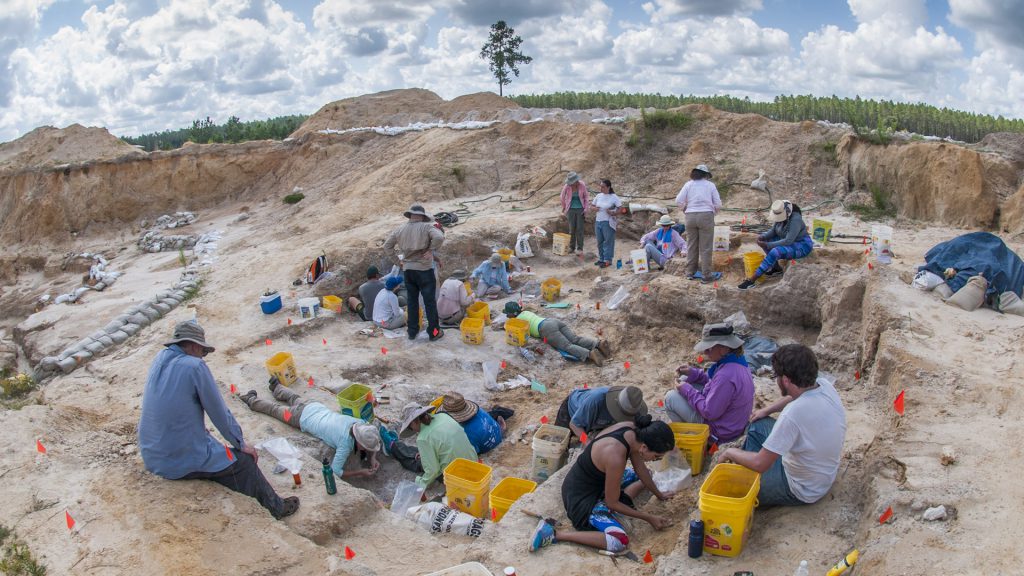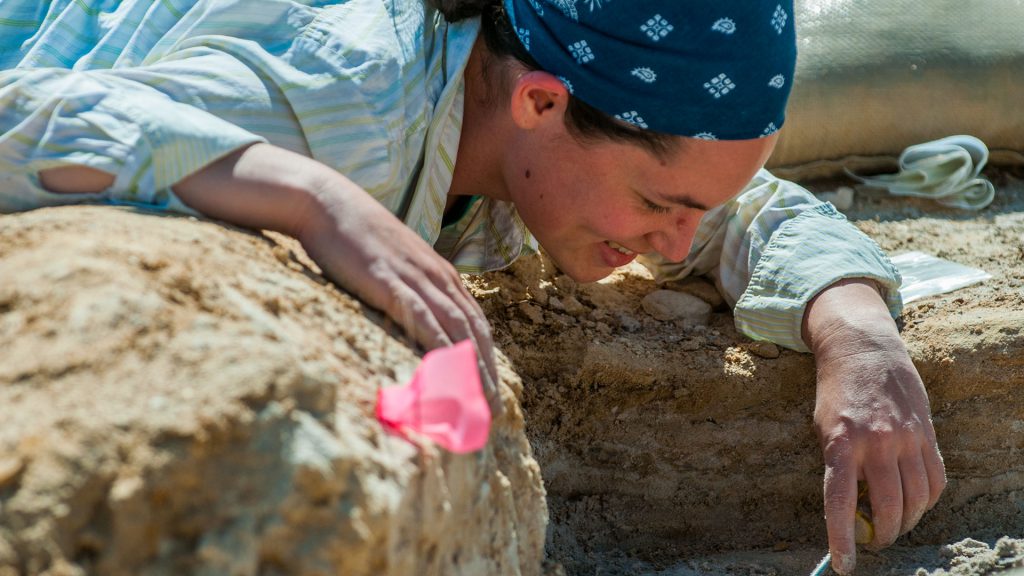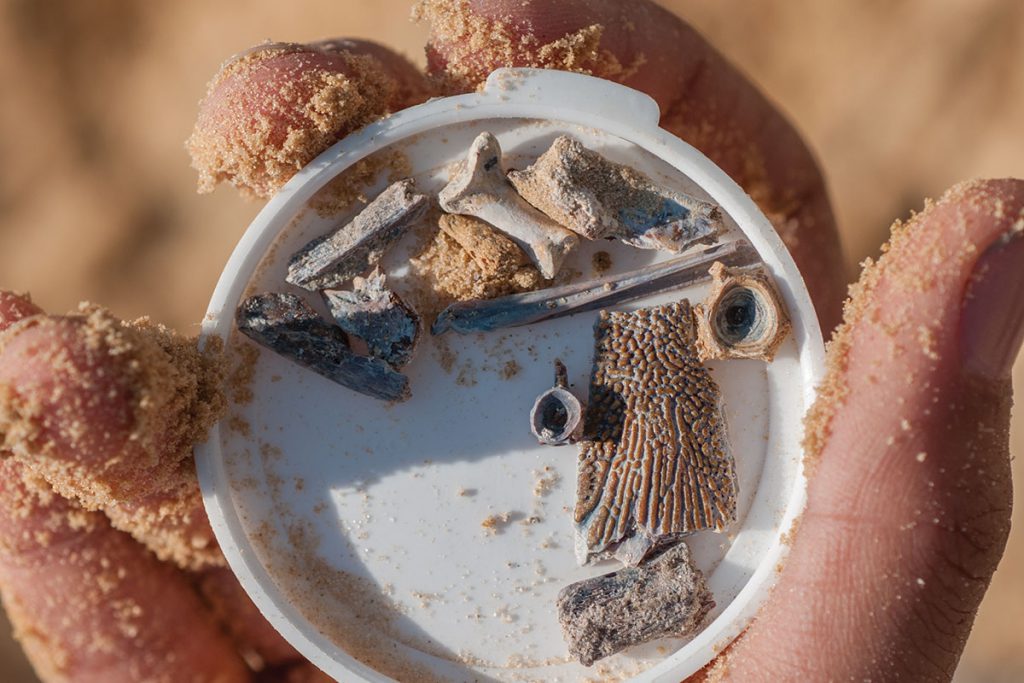It’s not uncommon for Florida Museum paleontologists to get calls about fossils. But a call in 2015 from a Levy County landowner about bones discovered on his property led to a bustling dig with valuable finds.
Museum paleontologists say the Montbrook dig is the first evidence in North Florida of fossils from the late Hemphillian land mammal age, about 5 million years ago. The site, once an ancient coastal river, has hosted hundreds of volunteers and yielded so many fossils that it is on the verge of a third dig season.
Vertebrate paleontology collections manager Richard Hulbert says many of the finds are notable. Among them:
- The first known skull of Rhizosmilodon fiteae, the leopard-sized ancestor of the tiger-sized saber-toothed cat of the Ice Age, Smilodon.
- Tens of thousands of fossils of fresh-water reptiles, amphibians, and fish, including multiple skeletons of an early population of Alligator mississippiensis and new species of snapping and soft-shelled turtles.
- About 15 individuals of the four-tusked, elephant-relative Rhynchotherium , ranging in age from young babies to old adults.
- About 50 fossils of rare bird bones from large swans and condor to a small quail.
Like other volunteers, Sheila Lucas says she likes the novelty of working the digs. “When I find a fossil, I’m the first human being to lay eyes on this amazing creature that roamed around millions of years ago.”
Photo Credits: Jeff Gage
This article was originally featured in the Spring 2017 issue of Explore Magazine.




